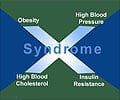Identification of blood-based metabolic changes might provide biomarkers that predict diet, and disease risk better than the standard method.

‘Developing machine learning techniques to predict individual responses to food and dietary routines improved by 10-20%.’





However, a research team led by a Michigan Medicine cardiologist has found a method using molecular profiling and machine learning to develop blood-based dietary signatures that more accurately predict both diet and the risk of cardiovascular disease and type 2 diabetes. The results are published in European Heart Journal.Hence, researchers need tools that are more reliable and precise while also being easy to use for everyone. Using metabolite signatures and data science, they might improve the understanding of how much people are taking in, as well as what risks they may incur for a cardio-metabolic disease that affects millions of people.
Developing Algorithms to Predict Food and Dietary Routines
Researchers followed more than 2,200 white and black adults in the Coronary Artery Risk Development in Young Adults study, using blood samples and food surveys to determine metabolite signatures of diet and subsequent disease risk over 25 years.Through a machine learning model, investigators were able to create a blood-based dietary signature that more accurately predicts a person’s entire diet over 19 food groups by 10-20%.
Additionally, the blood-based signature often outperformed the healthy eating index, a standard measure of diet quality, for identifying who is more likely to develop both diabetes and cardiovascular disease based on each food group.
Beyond understanding what types of nutrition are better or worse for our health, the methods here could allow those studying food science to take a metabolic snapshot of nutrition and diet to better understand their implications on health.
Advertisement
This is an important step and set of tools to do nutritional research with greater precision and efficiency. Eventually, such work may allow us to better understand optimal diets for our patients.
Advertisement
Source-Eurekalert













